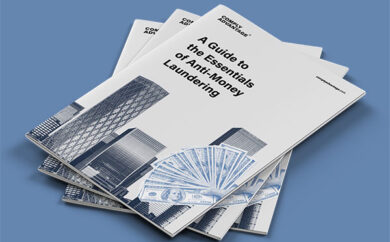

The FraudClassifier Model is a collaborative system that accurately identifies fraud typologies. Its industry-validated process bases each classification on whether the payment initiator was authorized or unauthorized. From there, it guides participants through a streamlined pathway ending in a customized fraud classification that can adapt to new information.
Before the model, inconsistent fraud classifications made it harder for organizations to understand or effectively respond to complex fraud trends. For example, the Federal Reserve noted a lack of clear distinction between check fraud and ACH fraud. Other types of fraud also lack consensus: some organizations classify identity theft and credit card theft together, while others separate them.
To solve this problem, the Federal Reserve collaborated with industry experts to create a consistent language through a robust and interactive resource for defining fraud: the FraudClassifier Model. Because of its strong benefits, ComplyAdvantage has chosen this model to underpin its approach to fraud and fraud prevention.
How Does the FraudClassifier Model Work?
For collaborative analytics to be effective, all parties must agree on key definitions related to fraud types, methods, and tactics. The FraudClassifier Model provides these standardized definitions, enabling financial institutions to implement a more targeted and effective strategy when responding to complex fraud types.
The model also includes authorized parties in its fraud classification – an entity with the right to initiate a payment – whereas traditional categorizations tend only to consider unauthorized parties – an entity without the right to initiate a payment. This is important because many fraud events involve bad actors deceiving or coercing an authorized party into making a payment, or an authorized party initiating a payment with intent to defraud. Without this extended definition, significant fraud trends could be overlooked.
The classifier model asks respondents three successive questions. Each further specifies the nature of a given fraud event:
- Who initiated the payment? The initiator is either classified as an authorized party or an unauthorized party.
- How was the fraud executed? For example, the initiator could have been manipulated if they are the victim – or may have hacked an account if they’re the fraudster.
- What tactics were used? This is the most detailed classification level, identifying exactly how the fraudster succeeded in committing the fraud (for example, through a relationship scam.)

Benefits of Adopting the FraudClassifier Model
In creating the model, FraudClassifier’s creators intended to offer several significant advantages to the fight against fraud. The industry not only confirmed these benefits but also pointed out several others. Validated benefits include:
- A holistic understanding of fraud – The Federal classifier model recognizes that unified fraud trends can affect various payment methods. To successfully identify trends shared by diverse events, it classifies fraud simply: first establishing whether or not the initiator was authorized, and then determining what tactics were used.
- Common fraud vocabulary – Without shared terminology, collaborative fraud analysis is virtually impossible. The model provides an intuitive, shared framework allowing cooperating organizations to use standard definitions and language.
- More collaborative data – The Federal Reserve seeks to use this model to allow better fraud data comparison across the industry. The common framework also supports information-sharing for collaborative analytics.
- Enhanced grasp of fraud trends – The model offers improved insights into fraud trends. These, in turn, better support risk-based fraud analysis.
- Stronger fraud countermeasures – Beyond analysis, the model’s insights allow risk management teams to implement more effective fraud-fighting responses.
- Better-educated customers – A well-informed firm is better able to educate its customers. And informed customers can better defend themselves against fraud.
The benefits of adopting the FraudClassifier Model are substantial, but it is important to clarify that such adoption is entirely voluntary. The model is intended as a powerful tool and resource that does not come with any regulatory requirements. That said, adopting it can better enable firms to stay proactively compliant and prevent unnecessary losses to fraud. It also puts firms in a position to join industry leaders in contributing to a stronger industry-wide understanding of fraud trends – bolstering the global fight against fraud and money laundering.
See how 1000+ leading companies are screening against the world's only real-time risk database of people and businesses.Request a Demo
Originally published 06 March 2023, updated 23 March 2023
Disclaimer: This is for general information only. The information presented does not constitute legal advice. ComplyAdvantage accepts no responsibility for any information contained herein and disclaims and excludes any liability in respect of the contents or for action taken based on this information.
Copyright © 2025 IVXS UK Limited (trading as ComplyAdvantage).
